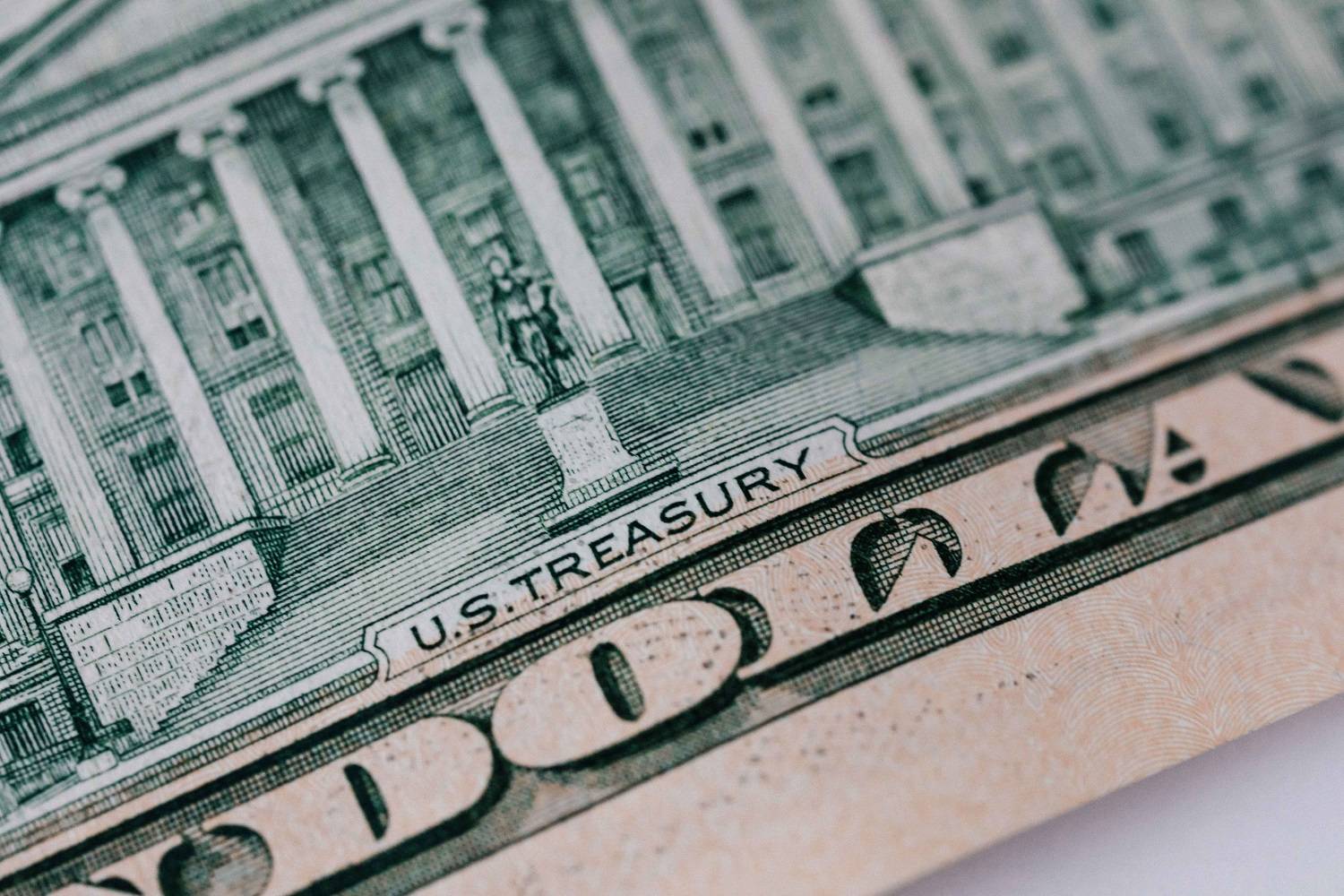Why buying government bonds is a bad investment for yourself, and our future
by James R. Elwood
Most people think that buying government bonds is the safest investment you can make, and that the money is used for beneficial purposes.
The truth is that lending money to governments causes more harm than good. It leads to higher taxes and wasteful spending. And, bondholders almost always lose money.
Politicians tell us that buying government bonds is “an investment in the future,” but giving government more money causes great economic harm.
Most national government borrowings are designed to cover operating deficits – to subsidize wasteful spending. So long as the money flows, bureaucrats don’t have any profit-or-loss-incentives to control their expenditures. Indeed, success in government is measured by how large you can make your department budget and staff!
The U.S. Department of Health and Human Services (HHS) spends 80% of its budget on administrative overhead, while private charities are prosecuted for fraud if more than 20-30% of donations goes for staff. In California, there are an average of 132 administrators for every 100 teachers in the public schools, while there are only 18 per 100 teachers in the parochial schools. Average cost per high-school student: $5200 public vs. $2200 private. Billions of tax dollars are wasted, and are thus unavailable for creating productive private businesses and jobs.
Many city or state bond-financed infrastructure projects are riddled with lavish fees for contractors and payroll “featherbedding.” Contractors and unions recycle large sums into corrupt politicians’ campaign accounts to ensure their re-election. These politicians then propose more projects. The special interests also use the loot to finance slick advertising campaigns to convince gullible voters that they should approve bond measures for projects of dubious public value, like fancy new sports stadiums.
Buying a bond is making a loan to the government. Governments attract bond buyers with seemingly-attractive interest rates and promises of complete safety.
Since politicians (and most voters) want to spend more than tax, governments usually fail to clear off bond debt when it comes due. So, they sell new bonds to borrow money to repay the old bonds and interest payments. Thus, government debt grows at a compound rate, paying interest on top of interest.
If a government’s finances get completely out of control, it will stop payment (default) on its debts. Government defaults have occurred throughout history, and are still commonplace in the Third World.
In the West, a major wave of municipal bond defaults occurred during the Great Depression. New York City avoided default in the 1970s only through a massive bailout. The US government has never officially defaulted; but in 1933, President Franklin Roosevelt forced lenders who held bonds redeemable in gold to accept paper currency.
Today, the risk of outright default by Western national governments is small. But these governments are conducting a hidden repudiation of their bond debt.
What governments give, governments take away – and more! First, governments reduce the lender’s actual interest payments through income taxes.
The really big blow to bondholders is government inflation of the money supply. Inflation, which is legalized counterfeiting, increases the supply of currency which is chasing a supply of goods and services. Inflation allows the government to make purchases at existing prices with bogus money. Suppliers react to resulting shortages by raising prices for their later customers. The purchasing power of money is steadily eroded. The government repays bonds in cheaper currency, in effect collecting a hidden tax.
To calculate the real annual return on bonds, multiply the amount (principle) of the bond by the interest rate. For example, a $10,000 U.S. Treasury Bill earning a 1997 interest rate of about 6% would be worth $10,600 after one year. But then you must subtract the percentage of income tax from the interest (which would be 40% or $240 for a top-bracket U.S. taxpayer). Then you account for inflation. The current official U.S. inflation rate is about 3%. So, multiply the after-tax total of $10,360 by .97 to get the real annual return.– in our example a gain of $49.20 – a pathetic ½ of 1%!
Amazingly, with today’s low inflation, this is an unusually good time for bonds! When taxes and/or inflation go up, bondholders get eaten alive. In fact, a ten-point increase in the top tax rate to 50% would drive the real return on our sample bond to minus $9.00. You can easily calculate the damage from a Scandinavian-level top rate of 75%! Worse, if inflation went up by just one percentage point, it would reduce the value of our bond by $100, making the real annual loss $54.40!
The terrible real returns on government bonds should be enough for any self-interested investor to avoid them like the plague. But for anyone who also cares about the well-being of other people, especially loved ones, there are other fundamental reasons to avoid government bonds.
“Extortion” refers to the coercive nature of government taxation. Taxation is the only way that the vast majority of government bonds can be repaid. Taxes are collected under the threat of force, making it a form of slavery. Everyone knows that if someone resists paying the demanded tax levy, the government will send a gang of ill-tempered armed men to throw the resistor in prison and seize his property.
“Futures” refers to the fact that bonds are debt to be repaid at a later date. The interest rate on new bonds is determined by predicted risks of inflation and the reliability of tax collection. (This is why U.S. bond rates are much lower than high-risk Russian rates, for example). “Futures” also refers to the buying and selling of existing bonds as a commodity by speculators, the prices based on predictions of future currency values.
The burden of repaying “extortion futures” will crush taxpayers in years to come. Official U.S. government debt is fast approaching a staggering $6 trillion, or over $20,000 for every man, woman and child in the country! Over $300 billion (or about 20% of the federal budget) goes to interest payments! Adding unfunded Social Security and Medicare obligations and loan guarantees could raise the figure as high as $22 trillion! This does not include billions more in state and city government debt.
Other governments have been even more reckless in mortgaging the future of their taxpayers. Per-capita debt is twice as high in Canada as the U.S., and exceeds 100% of annual Gross Domestic Product (GDP) in Belgium, Italy and Japan! Over 40% of tax revenues in these countries go to interest payments, thus squeezing service budgets. All major governments have large debts and are continuing to pile on deficits.
The burden of debt repayment will fall mostly on the poor and the young – those who can least afford it.
Everybody pays taxes. However, almost all bonds are bought by rich individuals and large institutions like banks and pension funds. While rich people certainly pay lots of taxes; they have the opportunity, unlike poor people, to buy bonds and recover the interest payments. The net result? A forced transfer of wealth from the poor to the rich. Almost everyone worships the “goddess of democracy” that gives citizens a voice in government, yet legislators and voters have merrily voted for debts that will have to be repaid by babies now in cribs, who have no choice in the matter. How unfair can you get?
Politicians will sometimes do the right thing – but only after they have exhausted all other alternatives. The countries which spent themselves into bankruptcy, like New Zealand by 1984, have made the greatest economic turnarounds. New Zealand’s government was forced to make major spending cuts. They slashed social-welfare spending, abolished agricultural subsidies, privatized numerous state-owned industries – including the post office – junked many regulations, and cut taxes. After several years of painful adjustments; the economy is booming, the government runs healthy surpluses, and the national debt is rapidly being paid off.
To force our politicians to reform – before we suffer the agony of bankruptcy – we have to take their credit card away.
Resistance to tax slavery is certainly morally justified, and one could add (at least in the U.S.) that most taxing and spending is blatantly unconstitutional. But tax resistance is illegal, and therefore dangerous to your family and property.
But no government can force you to lend it extra money. So don’t buy its bonds! To educate the public, do mass distributions of this pamphlet, especially if bond measures are on your local ballot. Write letters to the editor, call radio and TV talk shows, and post arguments on Internet forums against taxes and bonds. Send polite letters to your banker, pension fund manager or insurance company and urge them to switch out of government bonds. Support candidates, parties, single-issue groups and liberty organizations like ISIL who advocate major tax and spending cuts and privatization of government functions.
Government bonds are a bad deal all around. Just say NO! to “extortion futures!”
James R. Elwood is a founding Director and current Executive Director of ISIL.
This pamphlet was originally published in December 1997. It is part of ISIL‘s educational pamphlet series. Click here for the full index of pamphlets online.




